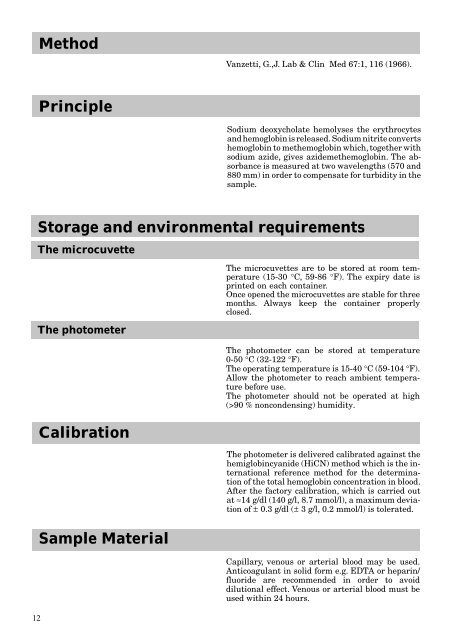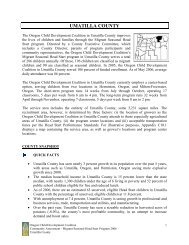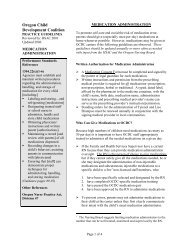Control Cuvette
Control Cuvette
Control Cuvette
You also want an ePaper? Increase the reach of your titles
YUMPU automatically turns print PDFs into web optimized ePapers that Google loves.
Method<br />
Vanzetti, G.,J. Lab & Clin Med 67:1, 116 (1966).<br />
Principle<br />
Sodium deoxycholate hemolyses the erythrocytes<br />
and hemoglobin is released. Sodium nitrite converts<br />
hemoglobin to methemoglobin which, together with<br />
sodium azide, gives azidemethemoglobin. The absorbance<br />
is measured at two wavelengths (570 and<br />
880 mm) in order to compensate for turbidity in the<br />
sample.<br />
12<br />
Storage and environmental requirements<br />
The microcuvette<br />
The photometer<br />
Calibration<br />
Sample Material<br />
The microcuvettes are to be stored at room temperature<br />
(15-30 °C, 59-86 °F). The expiry date is<br />
printed on each container.<br />
Once opened the microcuvettes are stable for three<br />
months. Always keep the container properly<br />
closed.<br />
The photometer can be stored at temperature<br />
0-50 °C (32-122 °F).<br />
The operating temperature is 15-40 °C (59-104 °F).<br />
Allow the photometer to reach ambient temperature<br />
before use.<br />
The photometer should not be operated at high<br />
(>90 % noncondensing) humidity.<br />
The photometer is delivered calibrated against the<br />
hemiglobincyanide (HiCN) method which is the international<br />
reference method for the determination<br />
of the total hemoglobin concentration in blood.<br />
After the factory calibration, which is carried out<br />
at ≈14 g/dl (140 g/l, 8.7 mmol/l), a maximum deviation<br />
of ± 0.3 g/dl (± 3 g/l, 0.2 mmol/l) is tolerated.<br />
Capillary, venous or arterial blood may be used.<br />
Anticoagulant in solid form e.g. EDTA or heparin/<br />
fluoride are recommended in order to avoid<br />
dilutional effect. Venous or arterial blood must be<br />
used within 24 hours.






